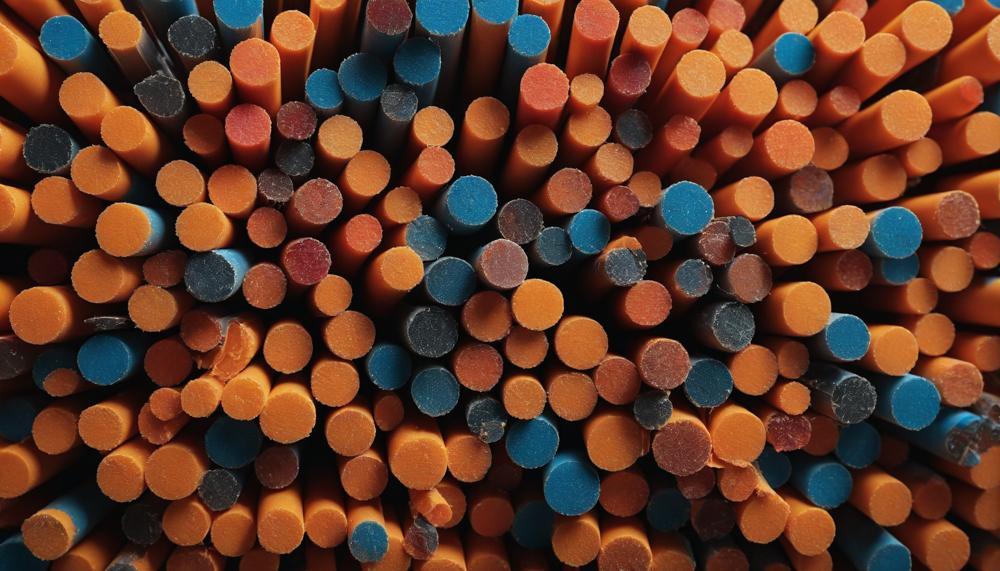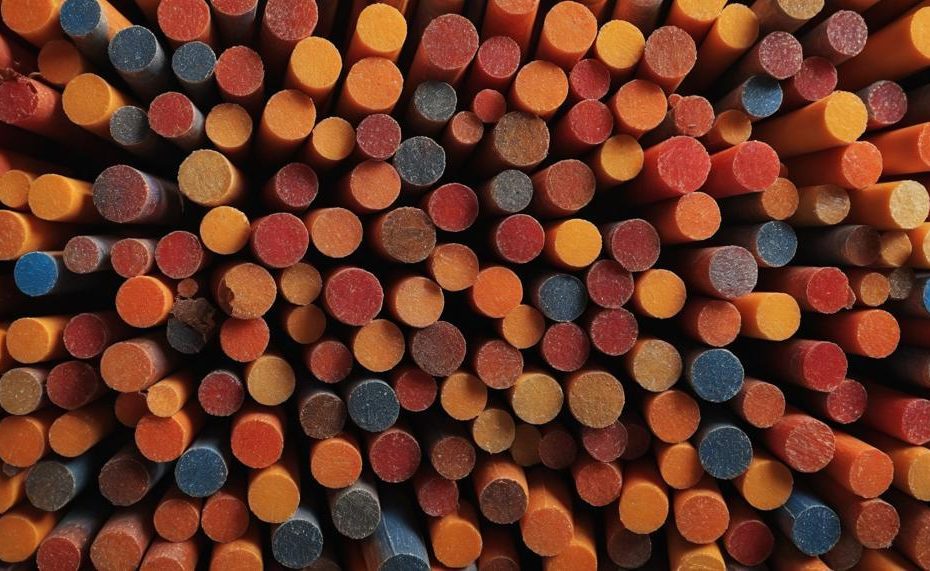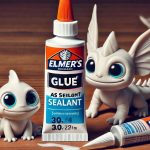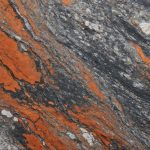The simple answer is yes, glue sticks can rot, but the rate of deterioration depends on several factors. As versatile adhesives used in various crafting projects, glue sticks are typically made from non-toxic materials, making them relatively safe and easy to handle. However, their composition and storage conditions play a crucial role in determining their longevity.
Here are the key points to consider regarding the potential for glue sticks to rot:
- Composition: Glue sticks made from synthetic polymers are less prone to rotting compared to those made from natural, animal, or plant-based adhesives. Synthetic glue sticks are designed to be more stable and less susceptible to degradation.
- Storage conditions: Proper storage is vital for preventing glue stick deterioration. Heat, moisture, and exposure to air can accelerate the rotting process. Store glue sticks in a cool, dry place away from direct sunlight and humidity.
- Age: Like most products, glue sticks have a shelf life. Over time, even well-stored glue sticks can dry out, become brittle, or lose their adhesive properties, leading to a form of rotting or degradation.
- Quality: Higher-quality glue sticks tend to have a longer lifespan and are less susceptible to rotting compared to cheaper, lower-quality options. Investing in reputable brands can ensure better longevity and performance.
To sum up, while glue sticks can rot, especially those made from natural materials or stored in unfavorable conditions, proper storage and handling can significantly extend their usable life. Synthetic polymer-based glue sticks from reputable brands, stored in cool, dry places, are less likely to rot or degrade prematurely.
Table of Contents
Materials That Hot Glue Won’t Stick To
Indeed, there are several common materials that hot glue struggles to adhere to effectively. The primary reason behind this is the low surface energy of these materials, which prevents the hot glue from forming a strong bond. Here’s a breakdown of some of the most common materials that hot glue won’t stick to, along with an explanation:
| Material | Reason for Poor Adhesion | Potential Solutions | |||||||||||||||||||||||||||||||||||||||||||||||||||||||||
|---|---|---|---|---|---|---|---|---|---|---|---|---|---|---|---|---|---|---|---|---|---|---|---|---|---|---|---|---|---|---|---|---|---|---|---|---|---|---|---|---|---|---|---|---|---|---|---|---|---|---|---|---|---|---|---|---|---|---|---|
| Plastics | Many plastics have a low surface energy, making it difficult for the hot glue to create a lasting bond. Additionally, some plastics release gases that can interfere with the adhesive properties of the glue. | Use alternative adhesives like epoxy or cyanoacrylate glue, or roughen the plastic surface with sandpaper before applying the hot glue. | |||||||||||||||||||||||||||||||||||||||||||||||||||||||||
| Silicone | Silicone has an extremely low surface energy and is designed to resist adhesives, making it nearly impossible for hot glue to stick to it. | Use specialized silicone adhesives or mechanical fasteners instead. | |||||||||||||||||||||||||||||||||||||||||||||||||||||||||
| Glass | The smooth, non-porous surface of glass provides little for the hot glue to grip onto, resulting in a weak bond. | Roughen the glass surface with sandpaper or use a glass primer before applying the hot glue. | |||||||||||||||||||||||||||||||||||||||||||||||||||||||||
| Waxed Surfaces | The wax coating on these surfaces creates a barrier that prevents the hot glue from adhering properly. | Remove the wax coating or use an alternative adhesive designed for waxed surfaces. | |||||||||||||||||||||||||||||||||||||||||||||||||||||||||
| Fabrics and Porous Materials | Hot glue can struggle to penetrate and bond with the fibers of fabrics and porous materials like foam or wood. | Prepare the surface by cleaning it or using a fabric adhesive spray before applying the hot glue. |
| Surface/Texture | Description | Effect on Glue Sticks |
| Porous materials | Surfaces with tiny holes or gaps, like wood, cardboard, or certain fabrics | The adhesive can seep into the pores, drying out the glue stick faster |
| Oily or greasy surfaces | Surfaces with residual oils or grease, such as some plastics or metals | Oils can degrade the adhesive, causing it to lose its bonding strength |
| Rough or textured surfaces | Materials with an uneven or coarse texture, like concrete or certain plastics | Increased surface area exposes more of the adhesive to air, accelerating drying |
Additionally, exposure to heat, humidity, and direct sunlight can hasten the breakdown of the synthetic polymers and waxes in glue sticks, leading to premature “rotting.” Proper storage in a cool, dry place away from moisture and temperature extremes is crucial for maximizing their shelf life.
Alternative Adhesives to Hot Glue
While hot glue has its advantages, there are several alternative adhesives that offer distinct benefits in terms of durability, heat resistance, and resistance to rot or degradation. Here’s a comparison of some popular options:
| Adhesive | Durability | Potential for Rot |
|---|---|---|
| Epoxy | Extremely durable, forms a rigid, water-resistant bond | Low potential for rot, highly resistant to moisture and chemicals |
| Super Glue (Cyanoacrylate) | Very strong, forms a rigid bond, but can be brittle | Low potential for rot, resistant to moisture and most chemicals |
| Contact Cement | Highly durable, forms a flexible, water-resistant bond | Low potential for rot, resistant to moisture and most chemicals |
| Tacky Glue | Durable, forms a flexible, clear bond | Moderate potential for rot, can be affected by moisture over time |
| Sewing Glue | Moderately durable, forms a flexible bond | Moderate potential for rot, can be affected by moisture over time |

Epoxy and super glue (cyanoacrylate) are among the most durable and rot-resistant options, forming rigid bonds that are highly water-resistant and resistant to most chemicals. Epoxy is particularly well-suited for projects that require a strong, waterproof bond, while super glue is ideal for quick, precise applications.
Contact cement is another durable choice, forming a flexible, water-resistant bond that is less prone to brittleness than super glue. It’s an excellent option for heat-sensitive projects or materials that require some flexibility.
How to Prepare Surfaces for Hot Glue
Preparing surfaces properly is crucial for achieving a strong and durable bond when using hot glue. Here are some key steps to follow:
| Step | Description | Importance |
| Clean the surfaces | Remove any dirt, grease, or debris from the surfaces using a degreaser or rubbing alcohol. Ensure the surfaces are completely dry before applying the hot glue. | Contaminants can interfere with the adhesion and weaken the bond. |
| Roughen the surfaces | Lightly sand or scratch the surfaces to create a slightly rough texture. This increases the surface area for the glue to adhere to. | Smooth surfaces can cause the hot glue to peel off easily. |
| Pre-heat the surfaces | Gently warm the surfaces with a hairdryer or heat gun before applying the hot glue. This helps the glue bond better and cure more effectively. | Warmer surfaces allow the hot glue to penetrate and adhere more securely. |
| Apply the hot glue correctly | Use a thin, even bead of hot glue and press the surfaces together firmly. Avoid using too much glue, as it can create a weaker bond. | Proper application ensures optimal adhesion and strength. |
| Allow for curing time | Hold the bonded surfaces together for a few minutes until the hot glue sets and cools completely. Avoid stressing the bond until it has fully cured. | Allowing the glue to cure properly prevents premature bond failure. |
Remember, hot glue has limitations and may not be suitable for certain materials or applications. Always follow the manufacturer’s instructions and consider using alternative adhesives like epoxy or construction adhesives for surfaces with low surface energy or heavy-duty bonding requirements.
Tips for Using Hot Glue
To prevent your glue sticks from rotting and ensure they last longer, follow these tips:
| Proper Storage | Store glue sticks in a cool, dry place away from direct sunlight and moisture. Heat and humidity can cause the adhesive to degrade faster. | Crafts Savvy |
| Keep Caps Tight | Always ensure the caps are tightly sealed when not in use. Exposure to air can dry out the glue stick and reduce its lifespan. | wikiHow |
| Buy Quality Brands | Invest in high-quality, non-toxic glue sticks from reputable brands. They tend to have a longer shelf life and better adhesive properties. | The Spruce Crafts |
Adhering to these storage guidelines can significantly prolong the lifespan of your glue sticks, ensuring they remain tacky and effective for your crafting needs. Additionally, regularly checking expiration dates and discarding any discolored or hardened glue sticks can prevent frustration and subpar results.
Conclusion
While convenient for crafts and projects, glue sticks aren’t immune to the ravages of time. Like all things, they can indeed rot and degrade over time. However, the rate at which this happens depends on several key factors.
First and foremost is composition – glue sticks made from synthetic polymers tend to be more rot-resistant compared to those derived from natural adhesives. Proper storage is also critical, as heat, moisture, and air exposure can accelerate the rotting process. Stashing glue sticks in a cool, dry place away from humidity gives them their best chance at longevity.
Even with ideal storage though, glue sticks have a shelf life. As they age, the adhesive can dry out, stiffen, and lose its binding power – the hallmarks of rotting. Higher quality glue sticks from reputable brands also tend to outlast bargain bin varieties when it comes to rot resistance.
So while that trusty glue stick may seem immortal, it’s wise to keep an eye out for signs of degradation like crumbling, discoloration or loss of stickiness. Replacing expired ones ensures your projects turn out seamlessly stuck together instead of a rotting mess.






